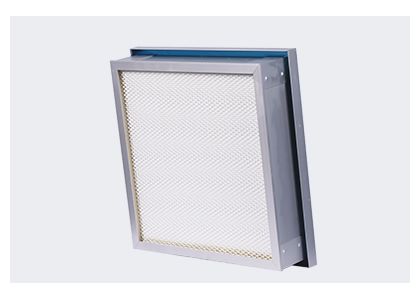
The liquid tank-type HEPA filter is a commonly used air filtration device that can effectively remove pollutants from indoor air and improve indoor air quality. This article will introduce the installation process of the liquid tank filter.
1. Determine the installation location
First, you need to determine the installation location of the HEPA filter according to the size of the room and the usage. Generally speaking, you should choose a location that is close to the human activity area, has good ventilation conditions, and is not easily blocked for installation. In addition, the sealing of the equipment must be considered, and the outside air cannot be allowed to directly enter the equipment and affect its normal operation.
2. Install the pretreatment device
The liquid tank type HEPA filter needs to be combined with the pretreatment device to exert its effect. The pretreatment device generally includes a primary filter and a medium efficiency filter, which are used to filter out large particles of dust and impurities and reduce the burden on the HEPA filter. Before installing the HEPA filter, you need to install the pretreatment device first to ensure that it is smoothly connected to the air inlet of the HEPA filter.
3. Connect the pipe
The HEPA filter needs to be connected to the outside through a pipe to achieve air circulation. During installation, you should choose the appropriate pipe material and specifications, and cut and connect them as needed. In order to ensure the sealing of the pipe, you can add a sealing pad or glue to the interface.
4. Install the liquid tank
The liquid tank is the core component of the liquid tank type HEPA filter, and special attention needs to be paid during installation. First, the liquid tank needs to be placed in the predetermined position to ensure that it is tightly connected to the pipeline. Then, the HEPA filter is installed at the air inlet of the liquid tank to ensure the filtering effect of the air. Then, it is necessary to fill the liquid tank (such as water or oil) so that the liquid tank can play a filtering and purification role. After the installation of the liquid tank is completed, it is necessary to check whether its sealing is good and conduct a trial run to ensure the normal operation of the equipment.
5. Debugging and maintenance
After the installation of the HEPA filter is completed, debugging and maintenance are also required. During the debugging process, it is necessary to check the pipeline connection, liquid tank sealing and filtering effect, and make necessary adjustments to the equipment. In terms of maintenance, it is necessary to regularly replace the filter, clean the liquid tank and check the pipeline connection to ensure the normal operation of the equipment.
The installation process of the liquid tank type HEPA filter includes multiple steps such as determining the installation location, installing the pretreatment device, connecting the pipeline, installing the liquid tank, and debugging and maintenance. Only by installing it in the correct way can the equipment be ensured to work normally and achieve the best filtering and purification effect.